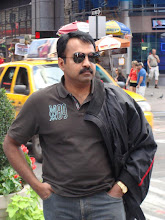The Cholas were looked upon as descended from the sun. These myths speak of a Chola king, supposed contemporary of the sage Agastya, whose devotion brought the river Kavery into existence. There is also the story of the king ManuNeedhi Cholan who sentenced his son to death for having accidentally killed a calf. King Sibi Chakravarthi who rescued a dove from a hawk by giving his own flesh to the hungry hawk was also part of the early Chola legends. King Sibi was also called Sembiyan, a popular title assumed by a number of Chola kings.
Maandhuvaazhi C. 2980 B.C.E.
El Mei Nannan C. 2945 B.C.E.
Keezhai Kinjuvan C. 2995 B.C.E.
Vazhisai Nannan C. 2865 B.C.E.
Mei Kiyagusi Aerru C. 2820 B.C.E.
Aai Kuzhi Agusi Aerru C. 2810 B.C.E.
Thizhagan Maandhi C. 2800 B.C.E.
Maandhi Vaelan C. 2770 B.C.E.
Aai Adumban C. 2725 B.C.E.
Aai Nedun jaet chozha thagaiyan C. 2710 B.C.E.
El Mei Agguvan a.k.a Keezh nedu mannan C. 2680 B.C.E.
Mudiko Mei Kaalaiyam Thagaiyan C. 2650 B.C.E.
Ilangok keezh kaalaiyan thagaiyan a.k.a. Ilangeezh nannan C. 2645 B.C.E. -start of Kadamba lineage by his brother Aai Keezh Nannan
Kaalaiyan gudingyan C. 2630 B.C.E.
Nedun gaalayan dhagayan C. 2615 B.C.E.
Vaengai nedu vael varaiyan C.2614 B.C.E.
Vaet kaal kudingyan C. 2600 B.C.E.
Maei Ila vael varaiyan C. 2590 B.C.E.
Sibi Vendhi C. 2580 B.C.E.
Paru nonji chaamazhingyan C. 2535 B.C.E.
Vaeqratrtri chembiya chozhan C. 2525 B.C.E.
Saamazhi chozhiya vaelaan C. 2515 B.C.E.
Uthi ven gaalai thagan C. 2495 B.C.E.
Nannan that kaalai thagan C. 2475 B.C.E.
Vel vaen mindi C. 2445 B.C.E.
Nedun jembiyan C. 2415 B.C.E.
Nedu nonji Vendhi C. 2375 B.C.E.
Maei Vael paqratrtri C. 2330 B.C.E.
Aai Perun thoan nonji C. 2315 B.C.E.
Kudiko pungi C. 2275 B.C.E.
Perun goep poguvan C. 2250 B.C.E.
Koeth thatrtri C. 2195 B.C.E.
Vadi sembiyan C. 2160 B.C.E.
Aalam poguvan C. 2110 B.C.E.
Nedun jembiyan C. 2085 B.C.E.
Perum paeyar poguvan C. 2056 B.C.E.
Kadun jembiyan C. 2033 B.C.E.
Nedun kathan C. 2015 B.C.E.
Paru nakkan C. 1960 B.C.E.
Vani sembiyan C. 1927 B.C.E.
Udha chira mondhuvan C. 1902 B.C.E.
Perun kaththan C. 1875 B.C.E.
Kadun kandhalan C. 1860 B.C.E.
Nakka monjuvan C. 1799 B.C.E.
Maarko vael Maandhuvan Aaththikko C. 1786 B.C.E.
Musukunthan Vaendhi C. 1753 B.C.E.
Peru nakkan Thatrtri C. 1723 B.C.E.
Vaer kaththan C. 1703 B.C.E.
Ambalaththu Irumundruvan C. 1682 B.C.E.
Kaari mondhuvan C. 1640 B.C.E.
Vennakkan Thatrtri C. 1615 B.C.E.
Maarko chunthuvan C. 1565 B.C.E.
Vaer parunthoan mundruvan C. 1520 B.C.E.
Udhan kaththan C. 1455 B.C.E.
Kaariko sunthuvan C. 1440 B.C.E.
Vendri nungunan C. 1396 B.C.E.
Mondhuvan Vendhi C. 1376 B.C.E.
Kaandhaman C. 1359 B.C.E.
Mundruvan Vendhi C. 1337 B.C.E.
Kaandhaman C. 1297 B.C.E.
Monjuvan Vendhi C. 1276 B.C.E.
Ani sembiyan C. 1259 B.C.E.
Nungunan Vendhi C. 1245 B.C.E.
Maarkop perum Cenni C. 1229 B.C.E.
Monjuvan Nanvendhi C. 1180 B.C.E.
Kop perunar chenni C. 1170 B.C.E.
Monthuvan jembiyan C. 1145 B.C.E.
Narchenni C. 1105 B.C.E.
Caet chembiyan C. 1095 B.C.E.
Nakkar chenni C. 1060 B.C.E.
Parun jembiyan C.1045 B.C.E.
Venjenni C. 998 B.C.E.
Musugunthan C. 989 B.C.E.
Maarkop perun jembiyan C. 960 B.C.E.
Nedunjenni C.935 B.C.E.
Thatchembiyan C. 915 B.C.E.
Ambalaththu iruvaer chembiyan C. 895 B.C.E.
Kaariko chenni C. 865 B.C.E.
Venvaer chenni C. 830 B.C.E.
Kaandhaman, C. 788 B.C.E.
Kaandhalan C. 721 B.C.E.
Caetchenni C. 698 B.C.E.
Vani nungunan C. 680 B.C.E.
Mudhu sembiyan Vendhi C. 640 B.C.E.
Peelan jembiyach chozhiyan C. 615 B.C.E.
Maeyan gadungo C. 590 B.C.E.
Thiththan C. 570 B.C.E.
Perunar killi Porvaiko C. 515 B.C.E.
Kadu mundruvan C. 496 B.C.E.
Kopperunjozhan C. 495 B.C.E.
Narkilli Mudiththalai C. 480 B.C.E.
Thevvan go chozhan C. 465 B.C.E.
Naran jembiyan C. 455 B.C.E.
Nakkam peela valavan C. 440 B.C.E.
Iniyan thevvan jenni C. 410 B.C.E.
Varcembiyan C. 395B.C.E.
Nedun jembiyan C. 386 B.C.E.
Nakkan aran jozhan C. 345 B.C.E.
Ambalathu irungoch chenni C. 330 B.C.E.
Perunar killi C. 316 B.C.E.
Kochaet Cenni C. 286 B.C.E.
Cerupazhi Erinda Ilanjaetcenni, C. 275 B.C.E.
Nedungop perunkilli C. 220 B.C.E.
Cenni Ellagan C. 205 B.C.E.
Perun gilli C. 165 B.C.E.
Kopperun jozhiyav ilanjaetcenni C. 140 B.C.E.
Perunar killi Mudiththalai ko C. 120 B.C.E.
PerumpootCenni C. 100 B.C.E.
Ilam perunjenni C. 100 B.C.E.
Perungilli Vendhi aka Karikaalan I C. 70 B.C.E.
Nedumudi Killi C. 35 B.C.E.
Ilavanthigaipalli Thunjiya Maei Nalangilli Caet Cenni, C. 20 B.C.E.
Aai Vaenalangilli C. 15 B.C.E.
Uruvapakraer Ilanjaetcenni, C. 10 - 16 C.E.
16 C.E. - 30 C.E. Kingdom ruled by a series of Uraiyur chieftains
Karikaalan II Peruvalaththaan, C. 31 C.E.
Vaer paqradakkai Perunar killi, C. 99 C.E.
Perun thiru mavalavan ,Kuraapalli Thunjiya C. 99 C.E.
Nalangilli C. 111 C.E.
Perunarkilli , Kula mutrtraththu Thunjiya C. 120 C.E.
Perunarkilli , Irasasuya vaetta C. 143 C.E.
Vael kadunkilli C. 192 C.E.
Kochenganaan C. 220 C.E. Nalluruththiran C. 245 C.E.
Manu, Ikshvaku, Vikukshi, Puranjaya, Kakutstha, Kakshivat, Aryaman, Analapratapa, Vena, Prithu, Dhundhumara,
Yuvanasva, Mandhatri, Muchukunda, Valabha, Prithulaksha, Parthivachudamani, Dirghabahu, Chandrajit, Sankriti,
Panchapa, Satyavrata, Rudrajit, Sibi, Marutta, Dushyanta, Bharata, Cholavarman, Rajakesarivarman, Parakesarin,
Chitraratha, Chitrasva, Chitradhanvan, Suraguru (Mrityujit), Chitraratha, Vyaghraketu, Narendrapati, Vasu (Uparichara),
Visvajit, Perunatkilli, Karikala, Kochchengannan.
